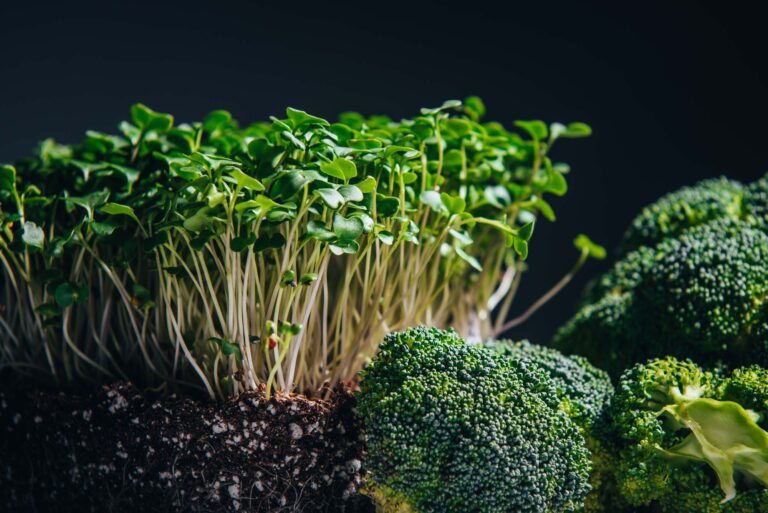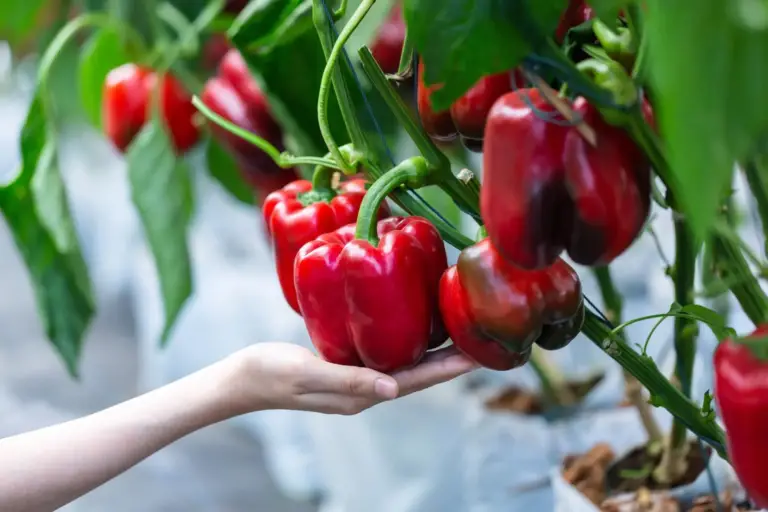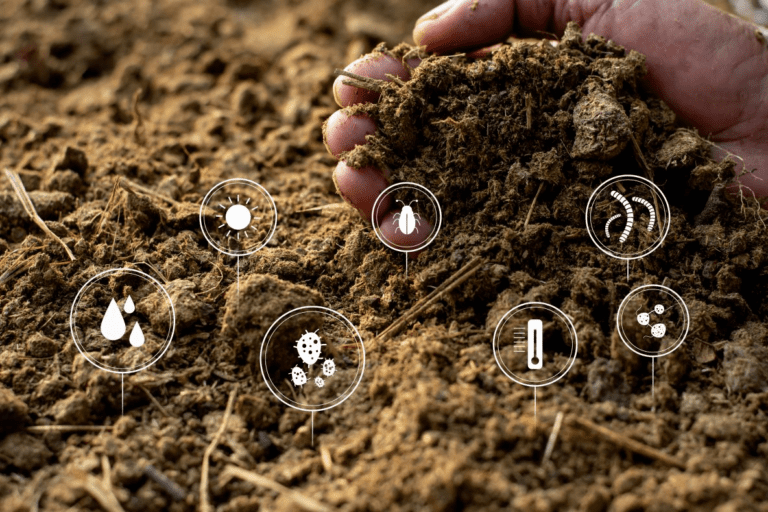Nurturing Dioscorea Japonica: The Best Mountain Yam of Japan
Table of Contents
Overview of Dioscorea Japonica
Dioscorea Japonica, commonly known as Mountain Yam, is a perennial climbing vine with heart-shaped leaves and twining stems. Belonging to the Dioscoreaceae family, this versatile plant is cultivated both for its edible tubers and ornamental value. The tubers are elongated and starchy, making them a valuable food source in various Asian cuisines and traditional medicines. Dioscorea Japonica is native to East Asia, particularly Japan, Korea, and China, where it has been cultivated for centuries.
Known for its hardiness and adaptability, Dioscorea Japonica thrives in diverse climatic conditions, from temperate to subtropical regions. Its ability to withstand colder temperatures makes it a suitable crop for mountainous areas, hence its common name. Cultivating this resilient plant provides not only a sustainable food source but also contributes to the preservation of traditional farming practices. With proper care and attention, the Mountain Yam plant can flourish and offer a bountiful harvest for gardeners and agricultural enthusiasts alike.

Origins and History of Mountain Yam
Dioscorea Japonica, commonly known as Mountain Yam, has a rich history dating back centuries. This culinary and medicinal plant has its origins deeply rooted in East Asia, particularly in Japan, Korea, and China. Mountain Yam has been a staple in the diets of these regions for generations, with historical references dating back to ancient times. The plant’s resilience and adaptability to mountainous terrains have made it a valuable crop in sustaining populations in challenging environments.
Throughout history, Mountain Yam has been revered for its nutritional value and healing properties. It was traditionally used in traditional Chinese medicine for its various health benefits, such as boosting immunity, improving digestion, and promoting overall well-being. In Japanese cuisine, Mountain Yam is a versatile ingredient used in various dishes, from soups to stir-fries, showcasing its culinary significance. With a legacy deeply intertwined with cultural practices and beliefs, Mountain Yam continues to be celebrated for its diverse uses and contributions to gastronomy and health.
Climatic Conditions for Growing Dioscorea Japonica
Dioscorea Japonica, commonly known as mountain yam, thrives in specific climatic conditions that are crucial for its growth and development. This perennial vine species is native to East Asia and requires a temperate climate to flourish.
The optimal conditions for cultivating Dioscorea Japonica include average temperatures ranging from 20°C to 25°C during the growing season. Consistent sunlight exposure is essential for the photosynthesis process, which is vital for the plant’s energy production and overall health. Additionally, moderate humidity levels between 60% to 80% are advantageous for promoting optimal growth and root development in mountain yam plants.
Here are the climatic conditions for growing Dioscorea japonica, commonly known as Yamaimo or Japanese mountain yam:
| Aspect | Conditions |
| Light | Full sun to partial shade. Provide at least 6 hours of sunlight per day. |
| Temperature | Cold-hardy, tolerating temperatures down to -25°F (-32°C) and heat up to 100°F (38°C). |
| Soil | Light, rich, and well-draining soil. |
| Water | Water consistently, aiming for about 1 inch (2.5 cm) of water per week. |
| Fertilizer | Apply slow-release pellets after 8 weeks of growth. |
| Pests | Watch out for root knot nematodes, birds, and mice. |
| Diseases | Be cautious of root rot. |
Dioscorea japonica is a fascinating vining plant that produces edible tubers. Its long white tubers, buried 1 to 3 feet underground, can reach lengths of 1 to 3 feet. The vine grows up to 10 feet tall and has elongated heart-shaped leaves. Interestingly, it’s one of the few yam species that can be eaten raw. In late summer, female plants produce small string-like white or yellow flower bunches that smell like cinnamon, while male plants grow air potatoes above ground on the leaf axils of the vine.
Soil Requirements for Cultivating Mountain Yam
Mountain yam, also known as Dioscorea Japonica, thrives in well-drained soil with a pH level between 5.5 and 6.5. This species prefers fertile, loamy soils that are rich in organic matter and have good moisture retention capacity. Sandy soils may not be ideal as they allow excess drainage, potentially leading to water stress for the plant.
It is essential to ensure that the soil for cultivating mountain yam is loose and airy to promote root development and prevent water stagnation. Compacted or heavy clay soils can impede root growth and water permeation, negatively affecting the overall health of the plant. Adding organic amendments, such as compost or well-rotted manure, can improve soil texture and fertility, creating an optimal growing environment for Dioscorea Japonica.
When cultivating Dioscorea japonica, also known as Yamaimo or Japanese mountain yam, it’s essential to consider the following soil requirements:
| Requirement | Description |
| Soil type | A light loamy soil that is neutral to mildy alkaline is best for Dioscorea japonica. |
| Soil pH | The ideal soil pH range is 6.1 to 6.5 (mildy acidic). |
Propagation and Planting Technique
One of the key methods for propagating Dioscorea Japonica, commonly known as Mountain Yam, is through the use of tubers or tuberous root cuttings. These can be planted directly into well-prepared soil, ensuring that each cutting has at least one viable bud for successful growth. Planting depth is crucial, with a recommended depth of about 5-10 centimeters below the soil surface to promote healthy root development and emergence of new shoots.
Additionally, Mountain Yam plants can be propagated through vine cuttings, where healthy and disease-free vine segments are selected and planted in a suitable growing medium until roots develop. This method allows for the multiplication of plants and can be particularly useful for rapid expansion of yam cultivation. Proper care and monitoring of temperature, humidity, and light conditions are essential for the successful establishment of vine cuttings, leading to robust and vigorous plant growth.

Watering and Irrigation Practices
Proper watering and irrigation practices are crucial for the successful cultivation of Dioscorea Japonica, also known as Mountain Yam. These plants require consistent moisture levels in the soil to thrive, especially during the growing season. It is essential to water the plants regularly, ensuring that the root zone is adequately moist but not waterlogged. Overwatering can lead to root rot and other issues, while underwatering can stunt growth and reduce yields.
Adjusting the frequency and amount of water based on the climatic conditions and the stage of growth of the Mountain Yam plants is key to promoting healthy development. The soil should be allowed to dry slightly between watering to prevent water stagnation and encourage proper root aeration. Additionally, utilizing irrigation methods such as drip irrigation or soaker hoses can help deliver water directly to the root zone, minimizing water waste and reducing the risk of fungal diseases. By adopting efficient watering and irrigation practices, gardeners can support the growth and productivity of Dioscorea Japonica plants, ultimately leading to a successful harvest.
Fertilization and Nutrient Needs
To ensure optimal growth and development of Dioscorea Japonica, it is crucial to provide the plant with the necessary nutrients through proper fertilization. Mountain yams have specific nutrient requirements at different stages of their growth cycle. During the initial stages, a balanced fertilizer with higher nitrogen content can promote vigorous vegetative growth. As the plant matures and starts forming tubers, a fertilizer higher in phosphorus and potassium is recommended to support tuber formation and overall yield.
In addition to the primary macronutrients, mountain yams also benefit from micronutrients like magnesium, calcium, and boron, which play essential roles in various physiological processes. Conducting soil tests before fertilization can help determine the specific nutrient deficiencies and guide the application of fertilizers accordingly. Proper timing and dosage of fertilizers are crucial to avoid nutrient imbalances or deficiencies, which can negatively impact the growth and productivity of Dioscorea Japonica.
Pest and Disease Management
When it comes to managing pests and diseases in Dioscorea Japonica cultivation, vigilance and preventative measures play a crucial role in maintaining plant health. Common pests that may affect mountain yam plants include aphids, spider mites, and nematodes, while fungal diseases such as powdery mildew and leaf spot can also pose a threat. Regular inspection of the plants for any sign of pest infestation or disease symptoms is imperative to catch issues early on.
To prevent and manage pest infestations, cultural control methods such as proper spacing between plants, maintaining good air circulation, and practicing crop rotation can be effective strategies. Additionally, using organic pesticides or insecticidal soaps in a targeted manner can help in controlling pest populations without harming beneficial insects. For fungal diseases, proper watering practices, avoiding overhead irrigation, and applying fungicides according to the recommended schedule can aid in disease prevention and management. Furthermore, promptly removing and disposing of infected plant material can prevent the spread of diseases within the crop.
Here’s a summary of Pest and Disease Management for Dioscorea japonica, commonly known as Japanese yam or yamaimo:
| Issue | Management Strategies |
| Diseases | |
| 1. Fungal Diseases | Ensure good drainage to prevent waterlogged soil, as excess moisture can promote fungal growth. |
| Regularly check stored yams for signs of spoilage (soft spots, discoloration, mold) and remove affected tubers. | |
| 2. Bacterial Diseases | No specific management strategies were found in the provided information. |
| 3. Viral Diseases | No specific management strategies were found in the provided information. |
| Pests | |
| 1. Insects | Monitor for insect pests such as aphids, whiteflies, and beetles. |
| Use appropriate insecticides if infestations occur. | |
| 2. Rodents | Protect yam plants from rodents (e.g., rats, mice) that may feed on tubers. |
| Implement rodent control measures if needed. |
Remember that good drainage is essential to prevent disease proliferation, and regular checks on stored yams are crucial to maintain their quality.
Pruning and Training Mountain Yam Plants
Pruning and training are essential practices to ensure optimum growth and productivity of mountain yam plants. Regular pruning helps maintain plant vigor, improves air circulation, and reduces the risk of disease. It is advisable to prune dead or diseased vines, as well as those that are overcrowded or entangled with neighboring plants. By removing these unwanted growths, the plant can focus its energy on developing healthy foliage and tubers.
Training mountain yam plants involves gently guiding the vines to climb on trellises or support structures. This not only helps in maximizing space but also facilitates easy harvesting and maintenance. As the plants grow, it is recommended to train the vines to climb vertically by gently wrapping them around the support. This method not only promotes better light exposure for photosynthesis but also aids in the formation of well-shaped tubers. Proper training and pruning techniques can contribute significantly to the overall health and yield of mountain yam plants.
Harvesting Dioscorea Japonica
When it comes to harvesting Dioscorea Japonica, timing is crucial to ensure optimal tuber quality and yield. The ideal time for harvesting mountain yam typically falls between late autumn and early winter when the foliage begins to die back, indicating that the tubers have reached maturity. It is essential to carefully dig around the base of the plant to unearth the tubers gently, taking care not to damage them in the process.
After harvesting, it is recommended to brush off excess soil from the tubers and allow them to cure in a cool, dry, and well-ventilated area for a few days. This curing process helps the tubers develop a tougher skin, which promotes better storage and extends their shelf life. Once the mountain yam tubers have cured, they can be stored in a cool, dark location with proper airflow to maintain their quality until consumption or further processing.
Storage and Preservation Methods
After harvesting Dioscorea Japonica, it is essential to store and preserve this valuable crop properly to maintain its quality and extend its shelf life. Mountain yams should be cleaned thoroughly, removing any dirt or debris, before storing them in a cool, dark, and well-ventilated place. Ideally, the storage area should have low humidity levels to prevent mold growth and decay. Storing mountain yams at temperatures around 10-15°C (50-59°F) can help slow down the sprouting process and prolong their freshness.
To further preserve Dioscorea Japonica, you can also consider storing them in airtight containers or perforated plastic bags to control moisture levels. Avoid exposing mountain yams to direct sunlight or extreme temperatures, as this can accelerate spoilage. Regularly check stored yams for any signs of decay or sprouting and remove any affected tubers to prevent them from spoiling the entire batch. Proper storage and preservation methods will ensure that you can enjoy the delicious taste and nutritional benefits of mountain yams for an extended period.

Culinary Uses and Recipes with Mountain Yam
Mountain yam, also known as Dioscorea Japonica, is a versatile ingredient that can be used in various culinary applications. Its starchy and slightly sweet flavor makes it a popular choice for both savory and sweet dishes. One popular way to prepare mountain yam is by peeling and slicing it thinly, then frying or roasting it until it turns crispy and golden brown. These crunchy yam chips make a delicious and nutritious snack that can be enjoyed on its own or paired with dips.

In addition to yam chips, mountain yam can also be used in soups, stews, stir-fries, and even desserts. Its unique texture and taste can add a new dimension to traditional recipes, creating a gourmet twist that is sure to impress your taste buds. Whether you are looking to add a healthy and flavorful ingredient to your meals or experiment with new recipes, mountain yam is a versatile and delicious option to consider in your culinary endeavors.

Health Benefits and Nutritional Value
Dioscorea Japonica, commonly known as mountain yam, offers a plethora of health benefits due to its rich nutritional profile. Packed with essential vitamins and minerals, this versatile tuber is a valuable addition to a balanced diet. Mountain yam is a good source of dietary fiber, which aids in digestion and promotes gut health. Additionally, it contains significant amounts of vitamin C, an antioxidant that helps boost the immune system and combat oxidative stress in the body.
Moreover, Dioscorea Japonica is a low-calorie food, making it an excellent choice for those looking to manage their weight. Despite its low caloric content, mountain yam is a satiating food that can help keep you full and satisfied for longer periods. This root vegetable also provides essential nutrients like potassium, manganese, and vitamin B6, which are vital for overall health and well-being. Incorporating mountain yam into your diet can contribute to a nutrient-dense eating plan that supports optimal health and vitality.
Traditional and Cultural Significance
Dioscorea Japonica holds a deep-rooted tradition and cultural significance in various Asian countries, where it is not just a staple food source but also a symbol of prosperity and longevity. Many cultural rituals and customs are attached to the cultivation and consumption of this mountain yam, reflecting its importance in local traditions and celebrations. The plant’s resilience and ability to thrive in challenging mountainous terrains have made it a symbol of endurance and perseverance in various folklore and legends passed down through generations.
Communities have revered Dioscorea Japonica for its role in fostering unity and shared experiences, often incorporating it into festive dishes served during special occasions and gatherings. The mountain yam’s association with abundance and sustenance has led to its inclusion in traditional ceremonies and feasts as a way to bring good luck and blessings to all partakers. Its versatility in culinary applications has also earned it a place in cultural recipes handed down through families, showcasing the intricate link between food, culture, and identity within these societies.
Future Prospects for Dioscorea Japonica
The future prospects for Dioscorea Japonica look promising as more research and cultivation techniques are being developed to enhance its growth and yield. With the increasing awareness of the nutritional benefits and culinary versatility of mountain yam, there is a growing demand for this unique tuber in both local and international markets. As sustainable agricultural practices gain traction, Dioscorea Japonica presents itself as a viable crop option due to its resilience and adaptability to various climatic conditions.
Furthermore, advancements in organic farming methods and eco-friendly pest management strategies are opening up new possibilities for cultivating Dioscorea Japonica in a more sustainable and environmentally friendly manner. The integration of technology, such as precision farming and digital monitoring systems, can help optimize the growth parameters and ensure higher quality and yield of mountain yam crops. As consumers seek out alternative and nutritious food sources, the future of Dioscorea Japonica in the agricultural landscape looks bright, with potential for further innovation and commercial success.
To Know More About Growing Dioscorea japonica, Watch This Video!
Can Dioscorea Japonica be grown in regions with harsh winters?
Yes, Dioscorea Japonica can be grown in regions with harsh winters as long as proper protection and insulation measures are taken to prevent frost damage.
Are there any specific pruning techniques required for Mountain Yam plants?
Yes, pruning Mountain Yam plants is essential to promote better growth and yield. Regularly prune away any dead or diseased vines to maintain plant health.
What are some traditional uses of Dioscorea Japonica in different cultures?
In some cultures, Dioscorea Japonica is used in traditional medicine to treat various ailments, while in others it is incorporated into festive dishes and celebrations.
How can Dioscorea Japonica be preserved for long-term storage?
Dioscorea Japonica can be preserved by drying the tubers or storing them in a cool, dry place. Alternatively, they can be pickled or fermented for longer shelf life.
Are there any current research initiatives focused on the cultivation of Dioscorea Japonica?
Yes, there are ongoing research initiatives to improve the cultivation techniques, disease resistance, and yield of Dioscorea Japonica to meet the growing demand for this valuable crop.






